Great Dane Lab Mix: The Labradane Dog Breed
The lab mix, Labradane, is a unique designer dog breed, born from breeding a Labrador Retriever with a Great Dane. The Labradane dog breed showcases an impressive size and muscular physique. John’s Labradane puppies, a mix of Lab and Great Dane, carry the best of both breed dogs: the sociability of the Lab and the calm temperament of the Great Dane. These dogs sport a short, thick coat and come in various colors. Breeders recommend regular brushing to keep Labradane’s skin shiny and healthy.
Labradanes, the best dog for those who value intelligence and learning capacity, respond excellently to positive, consistent training. The Labradane, a lab mix, can fit perfectly into family life, but because of their large size, extra care should be taken around young kids. This active labrador dog breed needs plenty of exercise to remain happy and well-behaved, which helps deter undesired behaviors.
Key Takeaways
- Labradanes blend Labrador and Great Dane traits.
- They need regular brushing and exercise.
- Suitable for families, but watch around small children.
The Labradane, a Labrador and Great Dane mix, boasts a friendly and calm temperament. The thick coat of Labradane puppies, a cross between the Labrador Retriever and Great Dane, necessitates regular grooming to maintain health and shine. Intelligent and affectionate, these dogs integrate well into family life but need monitoring near kids due to their size. Exercise is vital to their happiness and behavior.
Quick Facts
Labradanes, known for their muscular physique and expressive faces, are a cross between Labrador Retrievers and Great Danes. These large dogs need plenty of space to live and play comfortably. They have short, dense coats that come in various colors, and to keep their skin and coat healthy, regular grooming is a must.
Owners should be aware that Labradanes might face health challenges like hip dysplasia, which is more common in more giant breeds. This means staying on top of their health with regular vet check-ups is vital.
Labradane Pictures
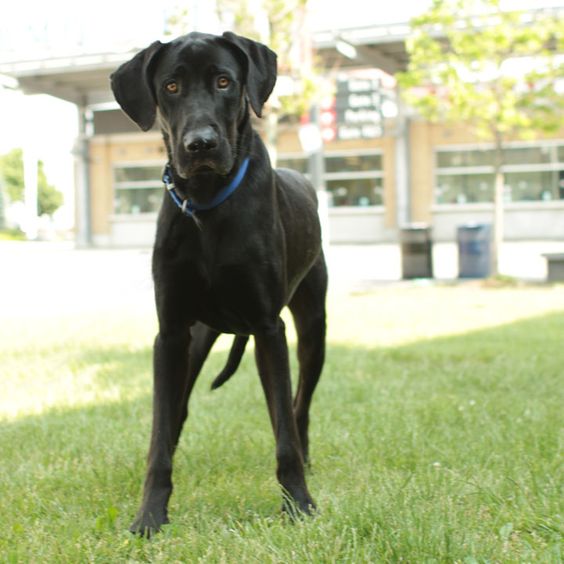
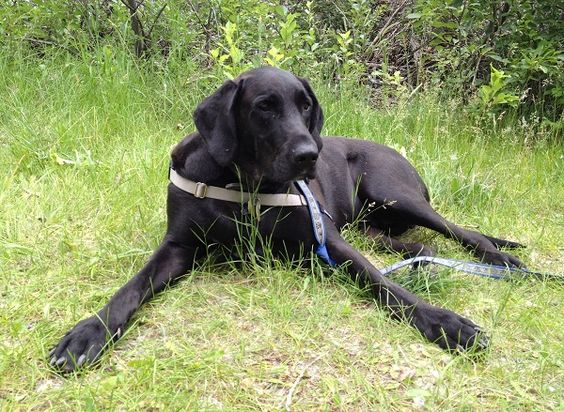
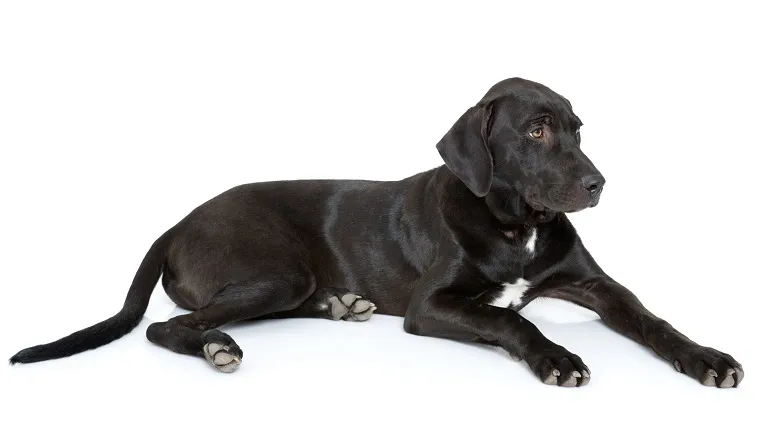
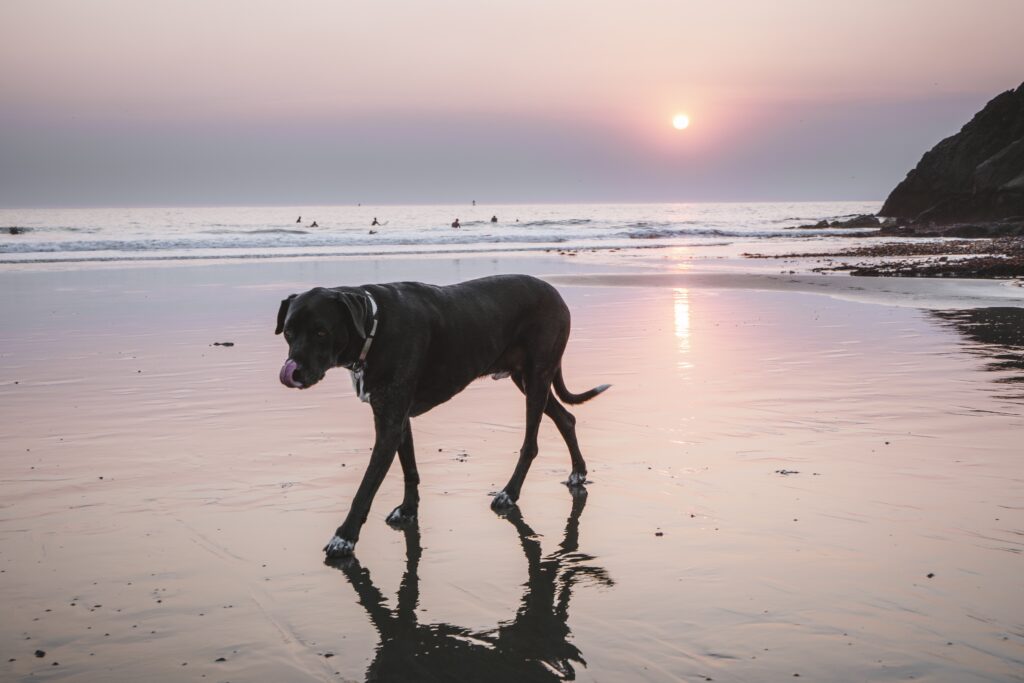
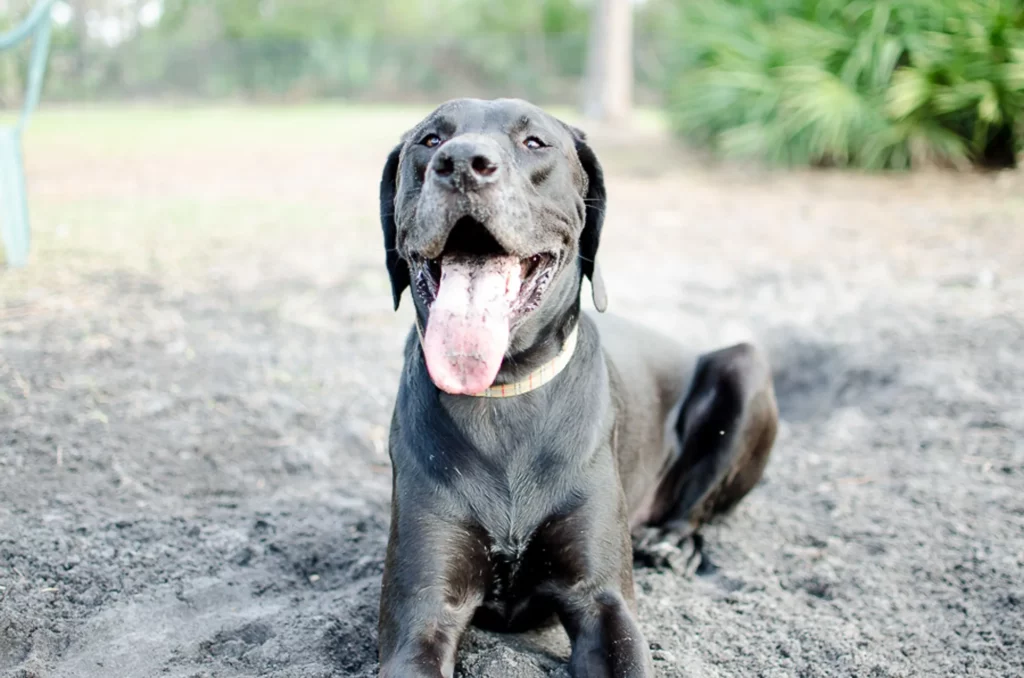
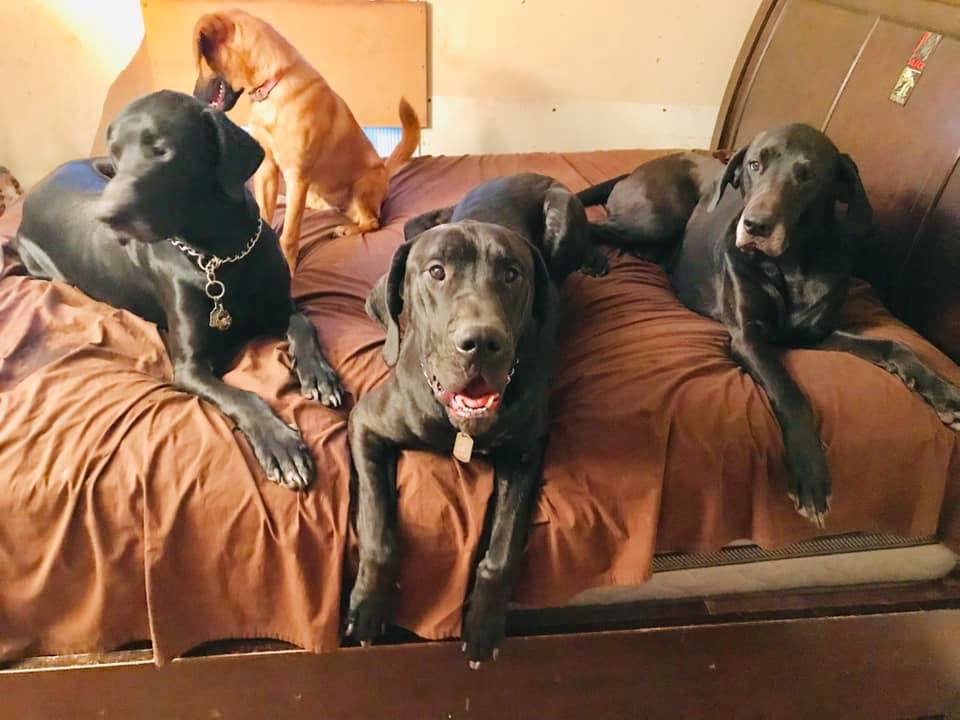
Overview
The Labradane stands out as a unique mix, blending the friendly nature of Labrador Retrievers with the stately presence of Great Danes.
As an intentional crossbreed, the Labradane showcases the best of both worlds – the Labrador’s warmth and the Great Dane’s majestic bearing. This large, muscular dog sports a short, thick coat that adds to its impressive look.
Known for being amiable and intelligent, the Labradane is easy to train and enjoys being around people.
Despite its size, this breed can adapt to different living situations, including apartments, as long as it gets enough exercise and has enough room to move around.
Key Traits
Diving into the critical traits of the Labradane, its large, muscular build stands as a testament to its Labrador Retriever and Great Dane lineage. As a hybrid, the Labradane combines the distinct characteristics of both breeds, resulting in a large species often considered one of the gentle giants of the canine world. Their energy levels are moderate yet require sufficient exercise to maintain physical and mental well-being. Due to their size, Labradanes are prone to health conditions typically associated with larger breeds.
| Trait | Description | Relevance |
|---|---|---|
| Size and Build | Large, muscular stature | Reflects lineage and breed size |
| Temperament | Affectionate, social, intelligent | Defines Labradane’s personality |
| Health and Exercise | Moderate exercise needs, susceptibility to conditions | Guides care and activity levels |
Breed Origin & Development
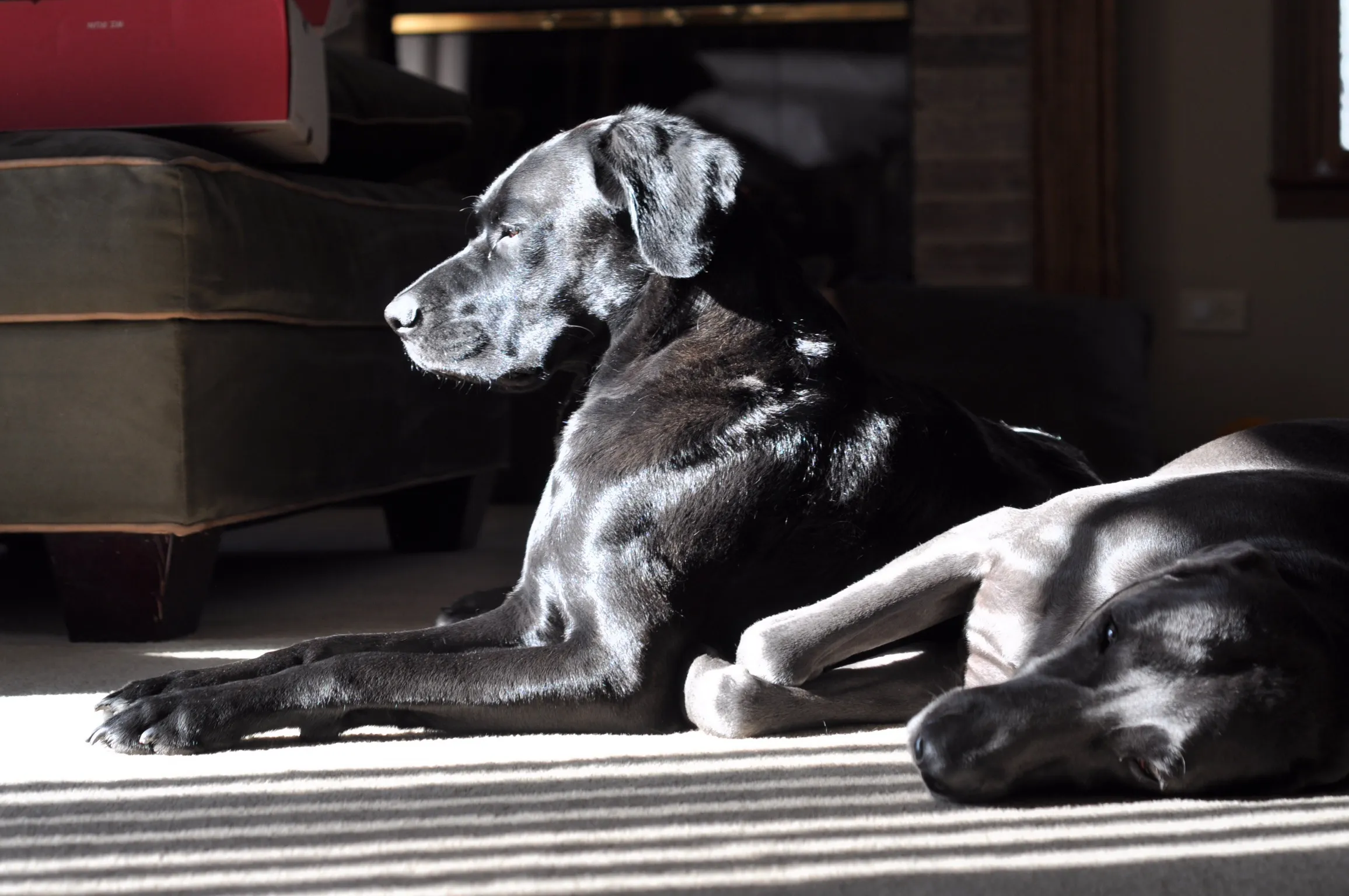
The Labradane is a crossbreed created from the Great Dane and the Labrador Retriever, each bringing unique qualities to their offspring. The rising interest in designer dogs has shaped the breeding of Labradanes, aiming for specific looks and skills.
Contributions from Parent Breeds
The Labradane’s ancestry includes the Great Dane’s strength and the Labrador Retriever’s adaptability. This mix has been influenced by the growing desire for customized dogs that meet specific standards of beauty and ability.
Trends in Breeding Preferences
The traits passed on to Labradanes, like their size, behavior, and coat, follow the well-known principles of genetics. This mix has been influenced by the growing desire for customized dogs that meet specific standards of beauty and ability.
Inheritance of Traits
The traits seen in Labradanes, such as their build, personality, and fur, are determined by classic genetic rules.
Ancestral Breed Contributions
Labradanes are unique big dog, blending the best from their Labrador Retriever and Great Dane heritage. These dogs are the result of careful breeding, combining the friendly and easy-to-train nature of Labradors with the grand size and gentle temperament of Great Danes.
This crossbreeding aims to create dogs that are both excellent companions and have an impressive appearance. The outcome is a dog that inherits a balanced mix of genetic qualities, temperaments, and physiques from both of its ancestors, making for a pet lovable like a Labrador and regal like a Great Dane.
Historical Popularity Trends
The Labradane emerged as part of the designer dog trend that took off in the 1980s in the United States. This hybrid breed mixes the friendly Labrador Retriever and the majestic Great Dane, often known for their size and gentle demeanor.
Despite the era’s preference for smaller dogs, the Labradane gained attention for its unique blend of looks and personality, appealing to those wanting a customized pet experience. This crossbreed highlights the ongoing interest in creating dogs with specific traits to match an owner’s lifestyle and taste.
Genetic Trait Inheritance
Understanding the genetics behind the Labradane, a crossbreed between the Labrador Retriever and the Great Dane, is critical to predicting the mix of traits in their puppies.
Looking at the heritage and development of the Labradane helps us anticipate how they might look and what health issues they could inherit from their parents.
Typically, a Labradane inherits half of its genetic makeup from each parent, but breeding across multiple generations can lead to unpredictable mixes of Labrador and Great Dane traits.
This genetic diversity affects their appearance, behavior, and health risks common in their purebred ancestors.
Owning a Labradane: Physical Dimensions
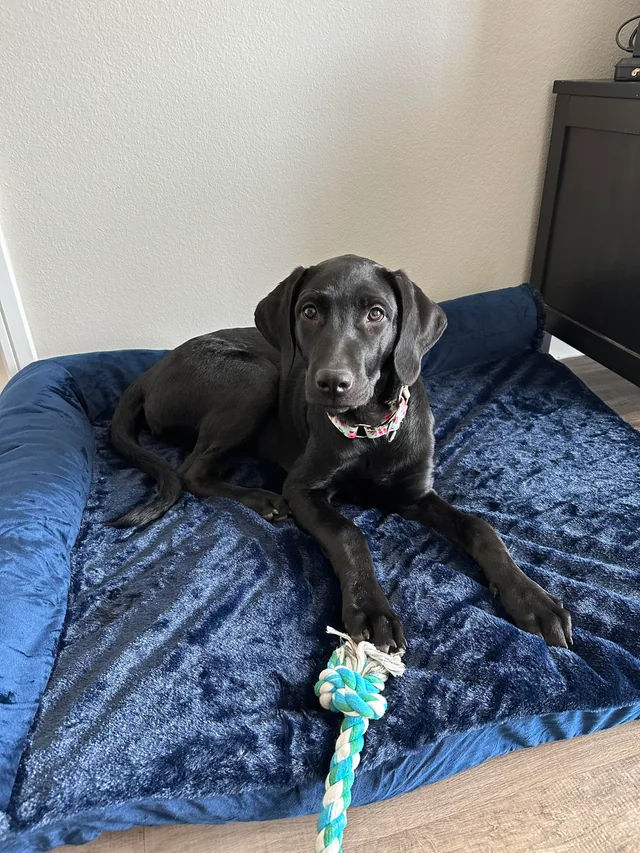
The Labradane is known for its impressive size, central to its role as a working dog and family pet. Understanding the specific physical characteristics of this hybrid breed is critical to appreciating its capabilities and caring needs.
When considering its height and weight, the Labradane falls into the large breed category, with measurements that give insight into its overall stature. The breed’s anatomy, including muscle and bone structure, is significant in strength and agility.
The coat and color patterns of the Labradane are not only visually striking but also have implications for grooming and care. Each aspect of Labradane’s physical traits provides valuable information for potential owners and breed enthusiasts.
Height and Weight of Great Dane Dog Breed
Labradanes, a cross between Labradors and Great Danes, are known for their large size. Male Labradanes can weigh from 100 to 190 pounds and stand 24 to 32 inches tall. Females tend to be smaller, weighing 90 to 170 pounds.
These dogs have a muscular build, reflecting the physical traits inherited from their Great Dane heritage. Their size varies greatly, affected by their diet, level of activity, and individual genetics.
The impressive size of Labradanes makes them standout pets that embody the best characteristics of their parent breeds.
Build and Structure
When you cross the impressive size of the Great Dane with the strength of the Labrador, the result is the Labradane, a breed that combines size and muscle in one remarkable package.
These dogs belong to the larger canines, easily towering over many other breeds with their significant height and weight.
Labradanes have a unique skeleton that reflects the Great Dane’s slim bones and the Labrador’s strong muscles, giving them a robust yet agile appearance. Their short, thick coat and distinctive features, like a high tail and floppy ears, reveal their striking look.
Coat and Markings
From their sturdy bones to their outward appearance, Labradane coats shine and come in various colors, from single tones to complex patterns like brindle or mantle. These dogs have short fur that is dense, but they only shed moderately. To keep their coat glossy and manage shedding, regular grooming is necessary.
Labradanes can have a variety of coat colors due to genetics, with patterns that are either simple or mixed. Their skin is naturally geared towards light shedding all year round, highlighting the importance of regular grooming to keep their appearance neat and manage loose hair.
Growth Stages
Caring for a Labradane’s coat through regular grooming is part of their upkeep. It is vital to watch their growth as they transition from energetic puppies to solid adult dogs. These pups have a lot of energy and may go through sudden growth spurts as they mature. Their size changes quickly, so routine vet visits are essential to ensure they’re growing as they should.
Labradanes, being large dogs, require plenty of exercise to build strong muscles and stay at a healthy weight. This helps prevent joint problems as they age. Keeping track of their growth from when they’re young to when they’re fully grown is crucial to their overall bone and muscle health.
Size Comparison
When you look at the Labrador, it’s clear this is a large breed. Adult Labradanes can grow up to 32 inches tall at the shoulder, towering over many other species. This breed has a notable presence thanks to its genetic heritage.
Female Labradanes usually stand slightly shorter than males but are still more significant than the average size for many dog breeds. Males can weigh between 100 to 190 pounds, and females range from 90 to 170 pounds. Their weight is a good match for their height. They have a broad chest and a more refined bone structure, which gives them a distinctive look.
Labradanes also show a wide range in height, with some as short as 24 inches and others reaching the full 32 inches, indicating a wide variety in their size.
Temperament Behavioral Traits
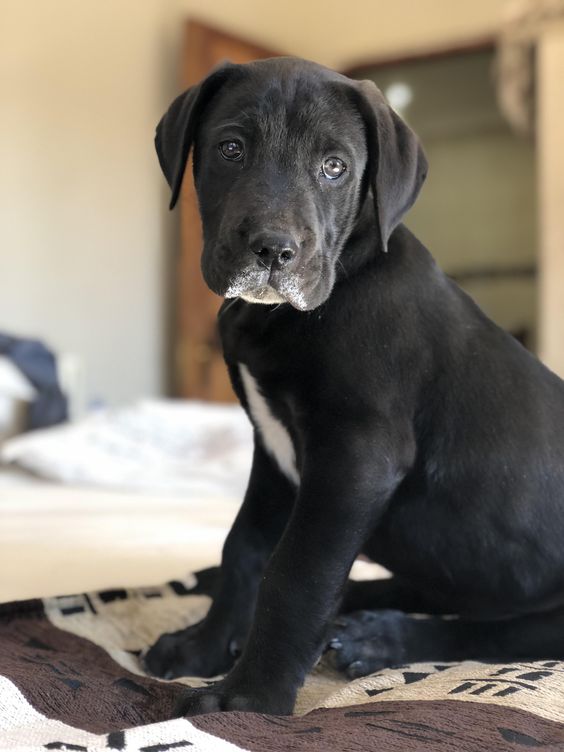
Labradanes, a crossbreed of Labrador Retrievers and Great Danes, display various behaviors that mirror their diverse heritage. To ensure they grow into well-rounded companions, it’s vital to attentively guide their social and psychological development. Here are some aspects to keep in mind:
Social Exposure is Key: Introducing a Labradane to different situations, people, and animals early on helps them become friendly and confident adults.
Managing Hunting Instincts: It is necessary to train Labradanes to control their instincts around smaller pets to prevent aggressive behaviors.
Overcoming Training Hurdles: Due to their large size and intelligence, it’s essential to persist with training, using positive reinforcement to address any training challenges they may face.
Understanding these points can significantly aid in nurturing a balanced and happy Labradane.
Socialization Importance of Labradane Puppies
Socializing your Labradane is vital for nurturing a friendly and well-behaved dog. These dogs naturally have a good-natured disposition that makes them suitable for families. Still, they must be exposed to different people and situations early to develop social skills.
Positive reinforcement works wonders with Labradanes due to their desire to please their owners, which helps them adjust quickly to new people and settings. Since they’re a giant breed, it’s important to supervise their interactions with kids and other animals to promote a harmonious household.
Proper socialization teaches a Labradane how to balance its protective nature, making it a friendly dog loyal to its family. This approach also helps prevent the dog from becoming overly wary of strangers, resulting in a well-rounded, friendly pet.
Prey Drive Management of Lab and Great Dane Mix
Labradanes, a mix between a Labrador and a Great Dane, have a strong prey drive that needs proper guidance to ensure their energy is directed towards suitable behaviors. Due to their heritage, these dogs may display a keen hunting instinct that requires structured training and early exposure to various environments.
Labradanes need plenty of physical activity and mental challenges to prevent destructive tendencies. Engaging them with games like scent tracking or a good game of fetch can keep their minds and bodies active. This not only taps into their instinctual behaviors but also helps stave off issues such as separation anxiety by keeping excess energy at bay.
Consistent and positive training approaches are vital in managing their instincts. Teaching them how to interact with other animals and people from a young age will help them become well-behaved and friendly companions.
Training Challenges
While Labradanes are bright and generally easy to train, they can sometimes be stubborn, which makes training more difficult. These dogs are pretty smart and can understand new commands quickly, but their independent streak might cause them not always to listen.
To overcome this, it’s essential to stick to regular and well-organized training sessions. Labradanes have a lot of energy and need plenty of exercises; not getting enough can lead to more stubborn behavior.
Also, their tendency to have specific health issues means they have to manage their mental and physical activity carefully. A flexible and personalized training strategy is critical to raising a well-behaved and healthy Labradane.
Aggression Signs
Understanding and spotting aggressive behavior in Labradanes is essential for their socialization and safe handling. Although they are usually affectionate family pets, Labradanes can show aggression if they feel their family is in danger or when meeting new people.
Growling, showing teeth, a rigid body posture and a prolonged stare are warning signs of aggression. A Labradane might also pin its ears back or lower its head when feeling aggressive.
To prevent harmful situations, owners should pay attention to these signs and encourage good behavior. Introducing Labradanes to various people and conditions when they are young is critical to avoid their protective nature from becoming aggressive.
Anxiety Behaviors
Labradanes can sometimes show signs of anxiety if they aren’t introduced to new people and places early on. They may act nervous or shy in situations they’re not used to. Even though Labradanes are generally relaxed and friendly, they might start to exhibit stressed behavior if they don’t get enough social and environmental stimulation. If these dogs spend too much time alone, they might develop separation anxiety, leading to more stress.
To prevent these issues, starting socializing and training them while they’re young is essential. This helps them grow into well-adjusted adults who can confidently handle different situations. Dog owners should be aware of Labradane’s sensitivities and provide a supportive environment for their psychological and emotional needs.
Common Health Concerns
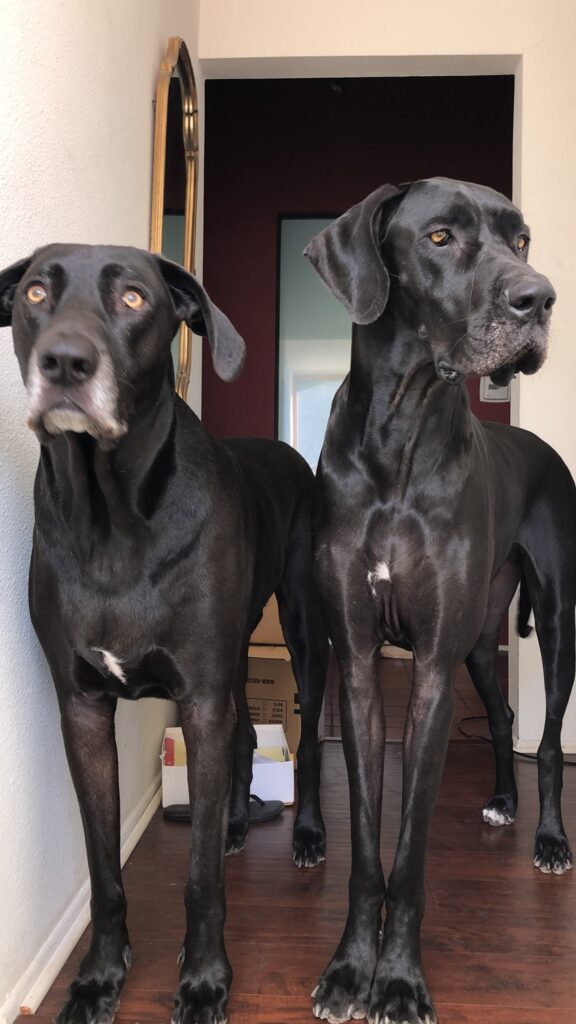
Labradanes, a crossbreed of Labrador Retrievers and Great Danes, may face several inherited health issues that require attentive care and regular check-ups. Proactive veterinary visits are vital for spotting and managing these health challenges early on.
The impact of a well-balanced diet is massive when it comes to preventing illnesses and supporting a longer, healthier life for these dogs.
- Inherited Health Conditions
Labradanes may inherit health conditions from both Labrador Retrievers and Great Danes. These can include hip dysplasia, heart disease, bloat, and certain types of cancer. It is essential for Labradane owners to be aware of these potential health issues and to work closely with their veterinarians to monitor and manage any symptoms that may arise.
- Routine Veterinary Check-ups
Regular check-ups with a veterinarian are crucial for Labradanes. These check-ups allow the vet to monitor the dog’s overall health and catch any potential problems early on. Labradane owners should schedule routine visits for vaccinations, dental cleanings, and general wellness exams. These visits also allow owners to discuss concerns or questions about their dog’s health.
- Influence of Nutrition on Health
A well-balanced diet can significantly impact the overall health and well-being of Labradanes. These dogs require a diet of high-quality protein, healthy fats, and essential nutrients. Feeding them a nutritionally balanced diet can help prevent obesity, promote healthy growth and development, and support their immune system. Labradanes should be fed a diet appropriate for their size, age, and activity level.
Hereditary Illnesses
Hereditary illnesses are common in Labradanes, which may include conditions like hip dysplasia, elbow dysplasia, and bloat. Their large size makes them more prone to these issues, significantly affecting their lifespan and quality of life.
Hip dysplasia, where the hip socket forms abnormally, often leads to joint pain and difficulty walking. Problems with the elbow joint, known as elbow dysplasia, can also cause discomfort and hinder movement. Bloat is a severe condition in which the dog’s stomach twists and fills with gas and needs immediate veterinary care.
To help reduce the risk of these genetic health problems, monitoring your Labradane’s weight and managing their diet is vital.
Preventive Veterinary Care
Preventive care is essential in maintaining the health of Labradanes, a Great Dane mix known for their susceptibility to specific health issues like hip dysplasia, bloat, and elbow dysplasia. These dogs benefit significantly from early detection of joint problems, which can be done through regular orthopedic exams.
Pet owners should work with their veterinarian to schedule vaccinations and discuss proper weight management to support joint health. Good dental care and regular ear cleanings also play a significant role in preventing infections.
Proactive health measures can significantly improve Labradane’s well-being and life expectancy.
Diet Impact on Health
Labradanes, a cross between Labradors and Great Danes, need a well-planned diet to prevent common health issues like bloat hip and elbow dysplasia.
This mix breed is prone to bloat, also known as gastric dilation-volvulus (GDV), so careful meal planning is necessary. It’s recommended to feed them 4.5 to 6 cups of premium dry dog food daily, based on their energy requirements and large size.
Spreading their meals across the day helps prevent bloat. A diet with meat as the main ingredient and added glucosamine supports joint health and helps manage weight, reducing the risk of common problems.
Maintenance Essentials
Caring for a Labradane involves critical practices to keep them healthy and happy. Regular grooming is vital to maintain their coat and reduce allergens in your home. A well-thought-out grooming schedule will help your Labradane look and feel their best.
Providing a diet that supports their energy levels and nutritional requirements is also essential. Adjusting their food to fit their needs ensures they get the right fuel for their active lifestyle.
Adequate exercise is crucial to keep them fit and prevent unwanted behaviors. Daily physical activity is a must to satisfy their exercise needs and help avoid destructive habits.
Grooming Routine
Maintaining a sleek coat for your Labradane is vital for their health and appearance. Light shedding is average year-round, but regular grooming is crucial to keeping skin’s shininess.
A weekly brushing session helps spread the natural oils in their skin, gets rid of dirt, and controls loose hair, which also helps reduce allergens around the home.
Incorporate baths into your Labradane’s grooming schedule, adjusting the frequency based on their activity and their exposure to dirt.
It’s also important to clean their ears regularly to prevent infections, as this breed can be prone to ear problems.
Keeping up with these grooming practices will support your Labradane’s skin health and contribute to their happiness.
Dietary Requirements
Labradanes, a blend of Labrador Retriever and Great Dane, often consume about 4.5 to 6 cups of dry kibble daily. It’s essential to tailor their diet to their energetic lifestyle and large build, focusing on high-quality meat and joint-supporting supplements like glucosamine.
To maintain their health and address their high energy levels, their food should match the calories they burn during exercise. Adequate room and a controlled diet are crucial to preventing obesity, which can hinder their mobility.
To reduce the risk of health issues like bloating and gastric torsion, it’s beneficial to have a feeding strategy that promotes slower eating, such as using larger kibble pieces and avoiding feeding them right before or after intense physical activity.
Exercise Regimen
Labradanes thrive when they get plenty of exercise to keep their energy levels in check and prevent boredom. These energetic dogs need a lot of daily activity to stay happy and out of trouble. A well-thought-out exercise plan should include daily tasks that meet their physical needs and keep their minds busy.
Labradanes benefit from high-energy activities like fast-paced walks at least twice weekly to maintain their stamina. Games that involve interaction, such as fetch and tug-of-war, are great for their exercise routine because they’re fun and help with training. Mixing in other activities like agility courses or hikes adds variety to their workouts, which is good for their health and behavior.
Health Check-Ups
Labradanes, a hybrid of Great Danes, need regular check-ups to stay healthy. These dogs can inherit health issues like hip dysplasia and the severe condition known as bloat. Keeping them healthy involves proactive vet care and watching for these issues before they become severe.
Maintaining a healthy weight is also a priority to reduce the chance of joint problems, so weight checks during vet visits are necessary.
Ear infections can be expected, so it is vital to have their ears checked and cleaned regularly. Combining a nutritionally balanced diet with consistent exercise is beneficial for their health.
However, the key to a Labradane’s well-being is consistent veterinary exams to ensure they enjoy a whole and active life.
Training Strategies
Practical training is critical to ensuring your Labradane stays healthy and behaves well. These dogs thrive on a training plan that uses rewards to encourage their natural desire to please.
It’s vital to keep their minds active to avoid bad habits. A varied set of challenges helps keep them focused and on their best behavior.
Starting socialization early is also essential, as it helps them adjust to different settings and grow into well-rounded pets.
A well-thought-out training approach that fits their physical needs is the best way to support their behavior and health.
Dietary Requirements
Dietary Requirements for Labradanes
Labradanes require a diet that supports their large size and active lifestyle. A well-rounded diet should include the right mix of protein, fats, and carbohydrates, ensuring they get all the necessary vitamins and minerals.
Regular meal times help prevent serious health issues like gastric dilation-volvulus, also known as bloat. To keep your Labradane healthy, being aware of any food allergies is critical.
Balanced Nutritional Needs
Labradors are large, energetic dogs that need a good amount of food to stay healthy. They should eat about 4.5 to 6 cups of high-quality dry food each day that’s made for their size and energy levels. Meat should be the main ingredient in their food to give them the proper nutrition.
It’s also wise to give them food with glucosamine to help keep their joints healthy since they can have mobility and bloat issues. Keep an eye on how much they eat to prevent obesity, which can lead to more health problems as they get older. Feeding them larger-sized kibble can help them eat slower, which is better for digestion and can help prevent bloat and gastric torsion after meals.
Feeding Schedules
Creating a regular feeding routine is vital for the health of a Labradane. These large dogs, a mix between a Labrador and a Great Dane, have unique dietary needs that must be managed attentively.
They should consume 4.5 to 6 cups of big-bite kibble daily to match their activity level and prevent eating too quickly, which can lead to choking. Due to the risk of bloat, it’s advised to split their meals into two or more servings and keep them calm after eating to reduce this risk.
Keeping your Labradane at a healthy weight is also crucial because they can have joint problems due to their large size. A diet rich in quality meat proteins and supplemented with glucosamine will help maintain their joint health.
Allergy Considerations
When feeding a Labradane, allergies must be considered to keep them healthy and happy. Though no dog is entirely free from causing allergies, some breeds are more suitable for allergic individuals.
Labradanes are affectionate companions, but they might have food sensitivities that owners need to watch out for. The usual suspects causing these reactions include specific proteins, grains, and food additives.
Knowing the primary meat source in their diet is vital to prevent any adverse effects. For Labradanes showing signs of allergies, trying an elimination diet or introducing new protein sources could be beneficial. A diet with few ingredients might also support their health and reduce the chances of an allergic
reaction.
